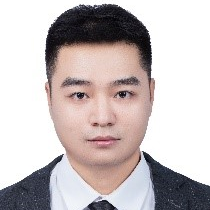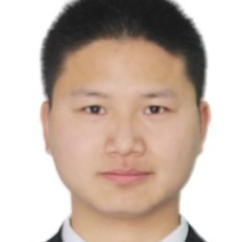Advanced Heat System for Sustainable Energy Usage in Winter Condition
A special issue of Sustainability (ISSN 2071-1050). This special issue belongs to the section "Sustainable Transportation".
Deadline for manuscript submissions: closed (26 March 2023)
Special Issue Editors
Interests: frosting; icing; heat pump; thermal comfort; advanced cooling; flow boiling
Special Issues, Collections and Topics in MDPI journals
Interests: nanoscale thermal transport; thermoelectric devices; thermal management in VLSI and power semiconductor devices
Interests: frosting; heat pump; thermal comfort; enhanced heat transfer
2. Department of Carbon Convergence Engineering, Jeonju University, Jeonju-si 55069, Jeonbuk, Korea
Interests: thermally driven absorption system; heat and mass transfer; membrane-based air-conditioning; carbon nanocomposite-based heat transfer
Interests: air source heat pump technologies; defrosting; transcortical co2 cycle; system optimization; thermal energy storage
Interests: thermal comfort; building energy management; sustainable building energy efficiency
Special Issues, Collections and Topics in MDPI journals
Interests: heat exchanger design; applied thermodynamics; energy efficiency; energy conversion; exergy analysis; techno-economic; exergo-economic; gas dynamics; HVAC&R; alternative refrigerants; advanced heat pumping technologies; dynamic and steady-state system modeling; thermal system optimization; machine learning; two-phase; nanofluids
Interests: thermal management; energy recovery; dehumidify; heat exchanger
Interests: frosting mechanism and characteristics on cold surfaces; defrosting performances for air source heat pumps; energy efficiency; advanced heat pump technologies
Special Issues, Collections and Topics in MDPI journals
Interests: solar thermal conversion and efficient utilization technology; characteristics of phase change materials and the application in the buildings
Special Issue Information
Dear Colleagues,
The demand for energy used in the winter has increased rapidly in recent decades. A series of advanced heat systems for sustainable energy usage in the winter have been widely developed, including not only for the requirements of space heating and hot water supply, but also for industrial drying and equipment cooling, etc. High-efficiency energy systems have consistently faced problems linked to frosting, icing, lack of energy sources, complicated systems, big space, high cost, etc. In heat pumps, for example, frosting always causes operational issues in the winter. There has been a great deal of efforts focused on applying and studying emerging sustainable and energy-efficient technologies. For example, compact structures, innovative design of multistage cycles, and the development of new refrigerants have been proposed to increase efficiency and reduce cost and space. Efforts have also been made to develop hybrid heat pump systems which can integrate multiple types of heat pumps or apply various heat sources, such as solar energy or industrial waste thermal energy. Meanwhile, air source heat pumps, aircraft, wind turbine blades, high voltage wire, pulverized coal transportation, and food cold storage are highly influenced by frosting and icing. In recent years, fundamental studies around refrigeration and fluid and heat and mass transfer have been widely reported—for example, frosting processes on the surface of a cold plate, the profile from a water droplet to its solidification, and high-accuracy measurements of frost layers. Advanced heat pipes are used to optimize thermal management by transferring thermal energy to the necessary positions. Efforts have also been made to develop huge low-cost sensors for data collection and develop robust dynamic models for optimum control or advanced intelligent control.
The aim of this Special Issue is to present the leading edge of high energy efficiency technologies and sustainable methods used in advanced heat systems for sustainable energy usage in the winter. Original papers on, but not limited to, the following potential topics are welcomed:
- Fundamental studies around refrigeration, fluid, and heat and mass transfer;
- Frosting/icing process, such as the profile of water droplets, and droplet freezing;
- Technology progress in antifrosting, defrosting, anti-icing, deicing, antifouling, and descaling;
- Advanced heat exchanger techniques applied to heat systems, such as heat pumps or heat pipes;
- New materials or technologies for smart sensors, such as thermoelectric materials;
- Integration of heat pumps with multienergy systems and drying/dehumidity technologies;
- Optimization of existing thermal cycles, development of new refrigerants or mixtures;
- Modelling of heat pump systems, such as physical-based models and data-based models and new application of artificial intelligence (AI) techniques for dynamic operation;
- Advanced solar energy usage technologies, as well as new materials for PV/PVT systems;
- Fault detection, diagnosis strategies, and big data analysis;
- Life cycle environmental and cost assessments;
- Reviews and opinions on research needs in the field.
The overall purpose of the Special Issue is to understanding the problem of frost or ice in the winter for different heat systems, and to improve the available technologies and methods for sustainable energy usage. It is hoped that this Special Issue will help to address the knowledge gap and lack of understanding of the issues icing and frosting cause to different heat systems. We are specifically interested in fundamental studies around winter and invite papers that test new technologies in winter conditions.
Prof. Dr. Mengjie Song
Dr. Tianzhuo Zhan
Prof. Dr. Yaxiu Gu
Prof. Dr. Sungjoo Hong
Prof. Dr. Zhihua Wang
Dr. Wei Yang
Dr. Ammar M. Bahman
Prof. Dr. Limei Shen
Dr. Long Zhang
Dr. Hai Wang
Guest Editors
Manuscript Submission Information
Manuscripts should be submitted online at www.mdpi.com by registering and logging in to this website. Once you are registered, click here to go to the submission form. Manuscripts can be submitted until the deadline. All submissions that pass pre-check are peer-reviewed. Accepted papers will be published continuously in the journal (as soon as accepted) and will be listed together on the special issue website. Research articles, review articles as well as short communications are invited. For planned papers, a title and short abstract (about 100 words) can be sent to the Editorial Office for announcement on this website.
Submitted manuscripts should not have been published previously, nor be under consideration for publication elsewhere (except conference proceedings papers). All manuscripts are thoroughly refereed through a single-blind peer-review process. A guide for authors and other relevant information for submission of manuscripts is available on the Instructions for Authors page. Sustainability is an international peer-reviewed open access semimonthly journal published by MDPI.
Please visit the Instructions for Authors page before submitting a manuscript. The Article Processing Charge (APC) for publication in this open access journal is 2400 CHF (Swiss Francs). Submitted papers should be well formatted and use good English. Authors may use MDPI's English editing service prior to publication or during author revisions.
Keywords
- heat system
- heat pump
- heat exchanger
- ice/frost
- drying
- dehumidify
- thermal management
- thermal comfort
- thermal material. energy recovery
- smart technology
Benefits of Publishing in a Special Issue
- Ease of navigation: Grouping papers by topic helps scholars navigate broad scope journals more efficiently.
- Greater discoverability: Special Issues support the reach and impact of scientific research. Articles in Special Issues are more discoverable and cited more frequently.
- Expansion of research network: Special Issues facilitate connections among authors, fostering scientific collaborations.
- External promotion: Articles in Special Issues are often promoted through the journal's social media, increasing their visibility.
- e-Book format: Special Issues with more than 10 articles can be published as dedicated e-books, ensuring wide and rapid dissemination.
Further information on MDPI's Special Issue polices can be found here.














